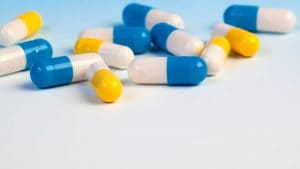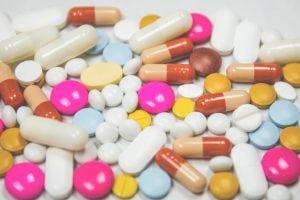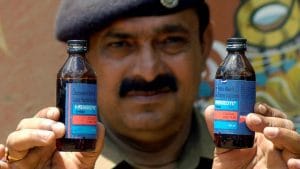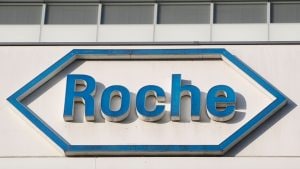How to revolutionise research and innovation in India’s pharma and medtech sectors
Summary
Cutting-edge technologies such as artificial intelligence (AI), machine learning (ML), big data analytics and genomics are transforming the landscape of research and development in India’s pharmaceuticals and MedTech sectors, and such technologies can also speed up drug discovery, bringing about innovative tools for diagnosis, treatment, and patient care, writes Arvind Sharma and Pallavi Mall of Shardul Amarchand Mangaldas & Co.
India’s pharmaceuticals sector has displayed a steady and progressive trend in the recent past. To put this in perspective, in 1969, Indian drugmakers held a 5% market share in the domestic market, and global pharmaceutical companies held 95%. By 2020, the local industry held an 85% market share in the country, lowering global drugmakers’ share to a mere 15%. This is largely due to India’s strong position in the subsection of generics, vaccines, biosimilars and biologics.
In the current era of growth and development, India’s pharmaceutical and medical technology (MedTech) sectors are poised for a transformation propelled by emerging technologies, innovative research practices, and a supportive regulatory framework.
Cutting-edge technologies such as artificial intelligence (AI), machine learning (ML), big data analytics and genomics are transforming the landscape of research and development in India’s pharmaceuticals and MedTech sectors. The use of such technologies is speeding up drug discovery, bringing about innovative tools for diagnosis, treatment, and patient care.
AI expenditure in India is projected to reach USD 11.78 billion by 2025 and is likely to add USD 1 trillion to India’s economy by 2035. By using AI and ML, large amounts of data can be analysed to identify new drug targets, detections of diseases, diagnostics, and predictions for health risks.
The investment and funding landscape in India’s pharmaceutical and MedTech sectors has been vibrant, with both domestic and international players showing a keen interest. According to a report by the India Brand Equity Foundation, India’s pharmaceutical market is expected to reach US$130 million by 2030, with factors such as increasing healthcare awareness, rising disposable incomes and government initiatives to promote this sector, pushing it forward. The Indian government has launched notable initiatives to promote research and innovation in these sectors, including the establishment of research parks, incubators and funding schemes.
The National Policy on Research and Development and Innovation in the Pharma-MedTech Sector launched on September 26, 2023 (the “Policy”), aims to bolster the domestic production of new drugs and innovative medical devices to aid growth of the pharmaceutical sector in India, and it also focuses on reducing external dependence for active pharmaceutical ingredients (APIs) and key starting materials (KSMs).
One of the main objectives of the Policy is to promote self-reliance through the integration of increased research and ease of investing in the industry. The Scheme for Promotion of Research and Innovation in the Pharma and MedTech Sector (“PRIP”) was launched alongside the Policy to provide momentum to the research infrastructure by linking academia with the industry.
The Policy aims to incentivise investments, particularly in production of biopharmaceuticals, patented drugs, new technology in medical devices for cancer care, diagnostics, etc. Stakeholders have long faced the issue of adhering to a challenging and cumbersome regulatory framework in India, and accordingly, there has been room for improvement.
It also aims to provide fiscal as well as non-fiscal incentives by way of introduction of direct or indirect funding, including provision for funding of late-stage research. It also aims to facilitate the infusion of funds through blended finance products and a proposed innovation fund for the pharmaceutical sector, which would help in reducing reluctance in investments required for long-term research.
The structure of PRIP is such that it attempts to promote investments, and enables corporates to benefit from the research and institutional infrastructure present in the country. It is designed to be highly beneficial as it aims to provide financial assistance to companies across various levels of technological readiness under set criteria. This would help corporates across all levels — from start-ups, to established entities, in terms of research opportunities.
The creation of investment opportunities and streamlining of regulatory procedures will aid in providing short-term and long-term solutions, including by developing a strong foundation (with contribution from the academia) for the MedTech sector. The Policy aims to achieve this by linking the pharmaceutical sector with academia and by setting up institutes for skill development. In addition, owing to the multidisciplinary nature of the MedTech sector, technical institutes will have to collaborate to train manpower, and this will boost employment opportunities.
The Policy and the PRIP can be viewed as the Indian government’s resolve towards fostering a vibrant and dynamic ecosystem for research and development, thus furthering its vision to build a self-reliant and cutting-edge pharmaceutical sector.
—The authors, Arvind Sharma and Pallavi Mall are Partner and Associate respectively at law firm Shardul Amarchand Mangaldas & Co. The views expressed are personal.

Elon Musk forms several ‘X Holdings’ companies to fund potential Twitter buyout
3 Mins Read
Thursday’s filing dispelled some doubts, though Musk still has work to do. He and his advisers will spend the coming days vetting potential investors for the equity portion of his offer, according to people familiar with the matter









 Listen to the Article
Listen to the Article  Daily Newsletter
Daily Newsletter



















